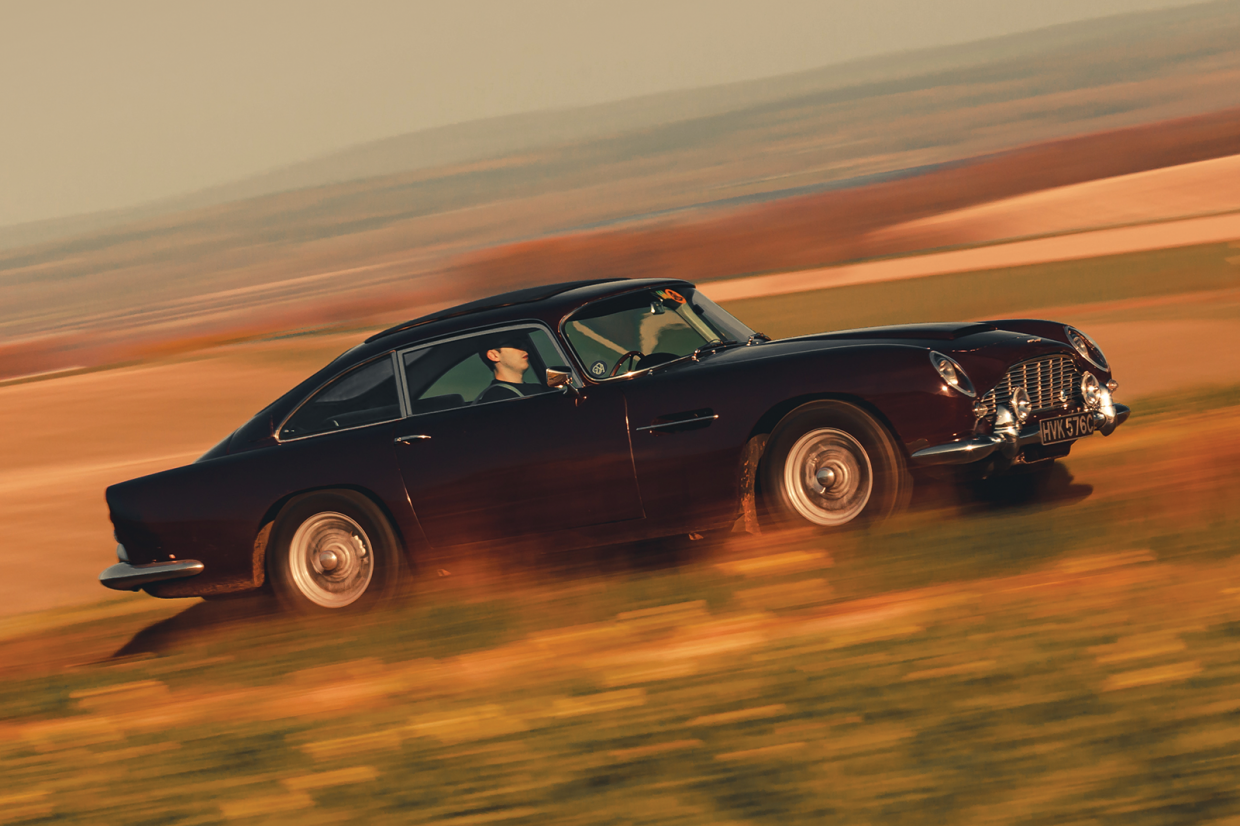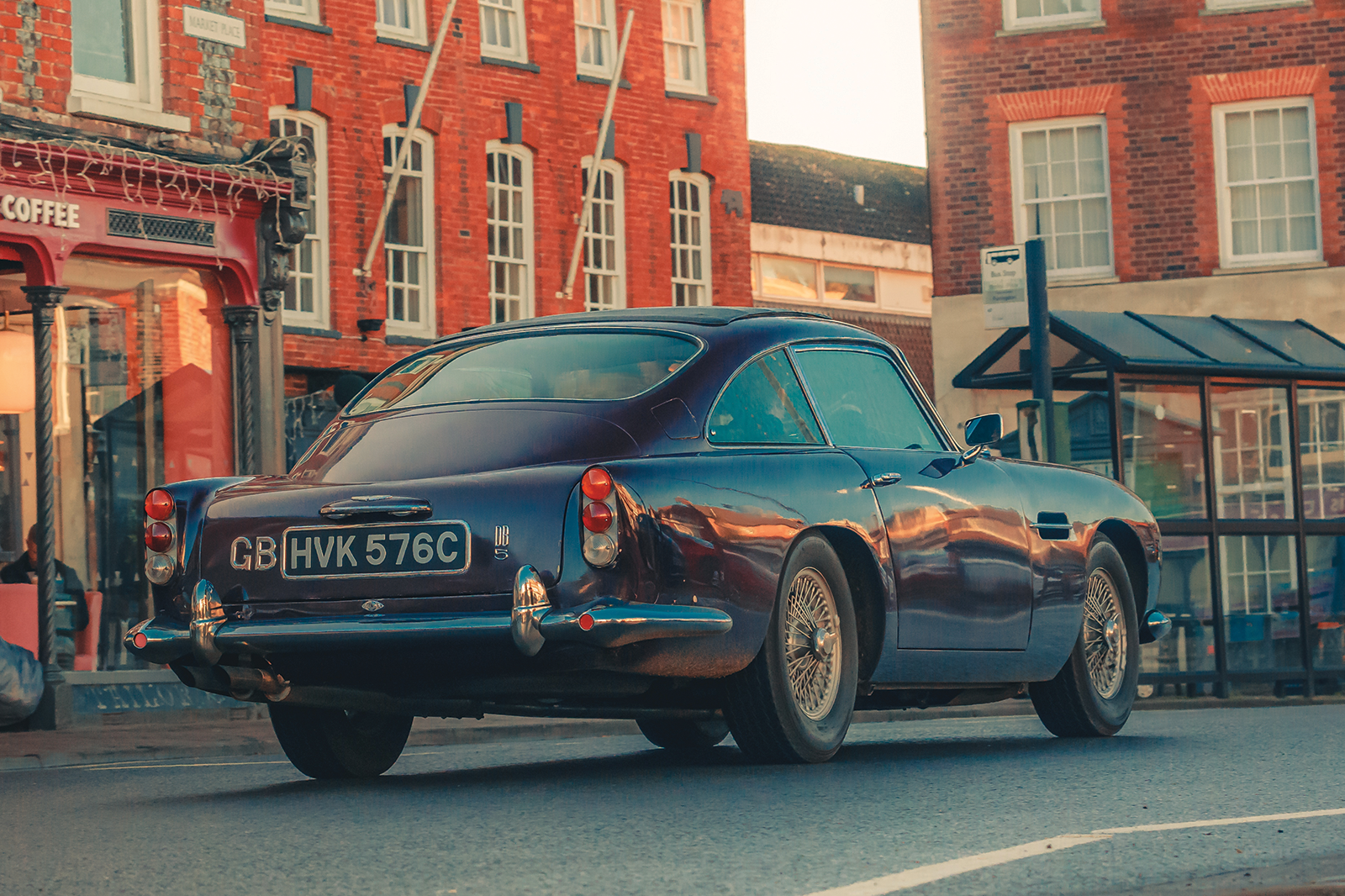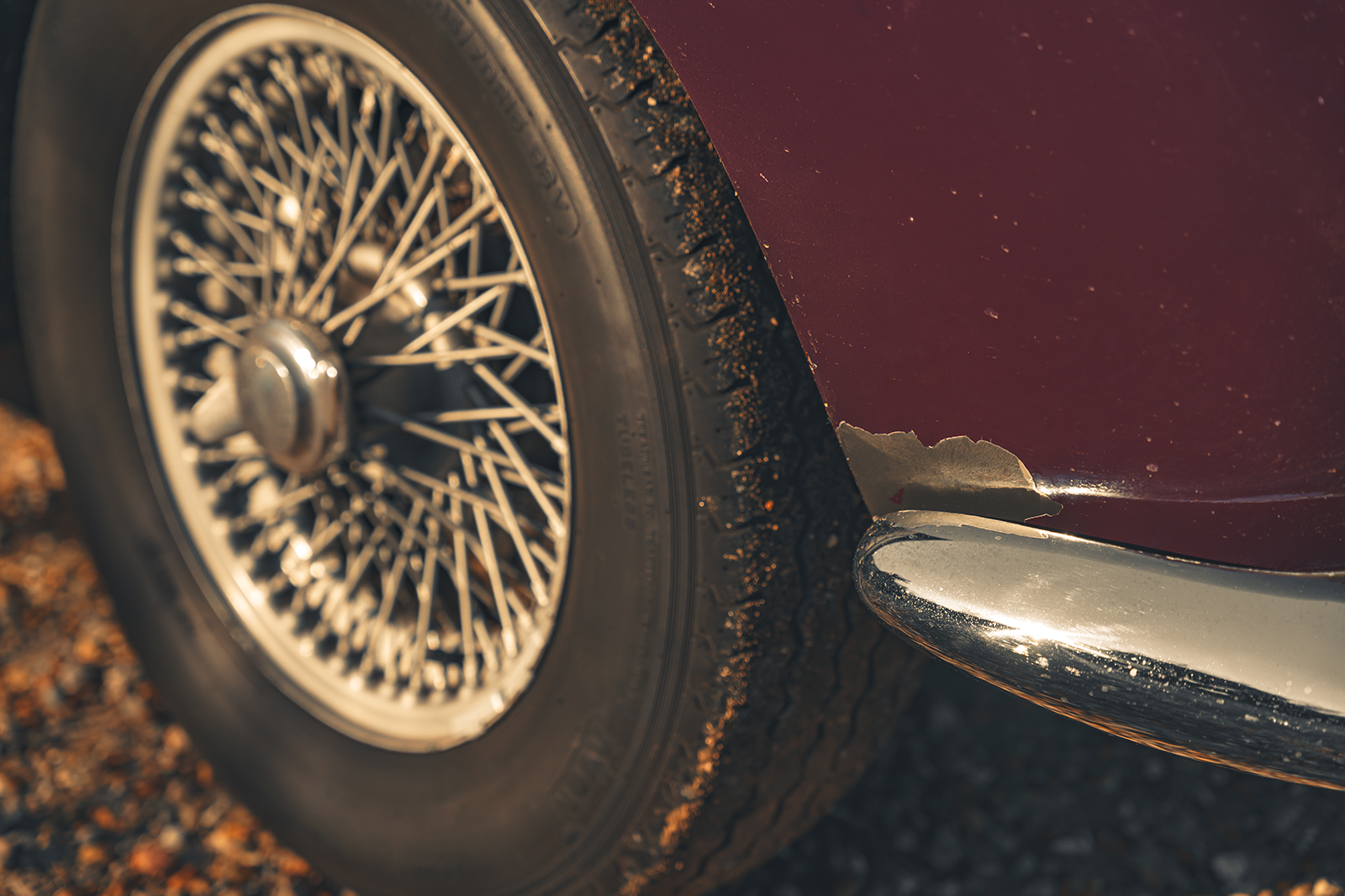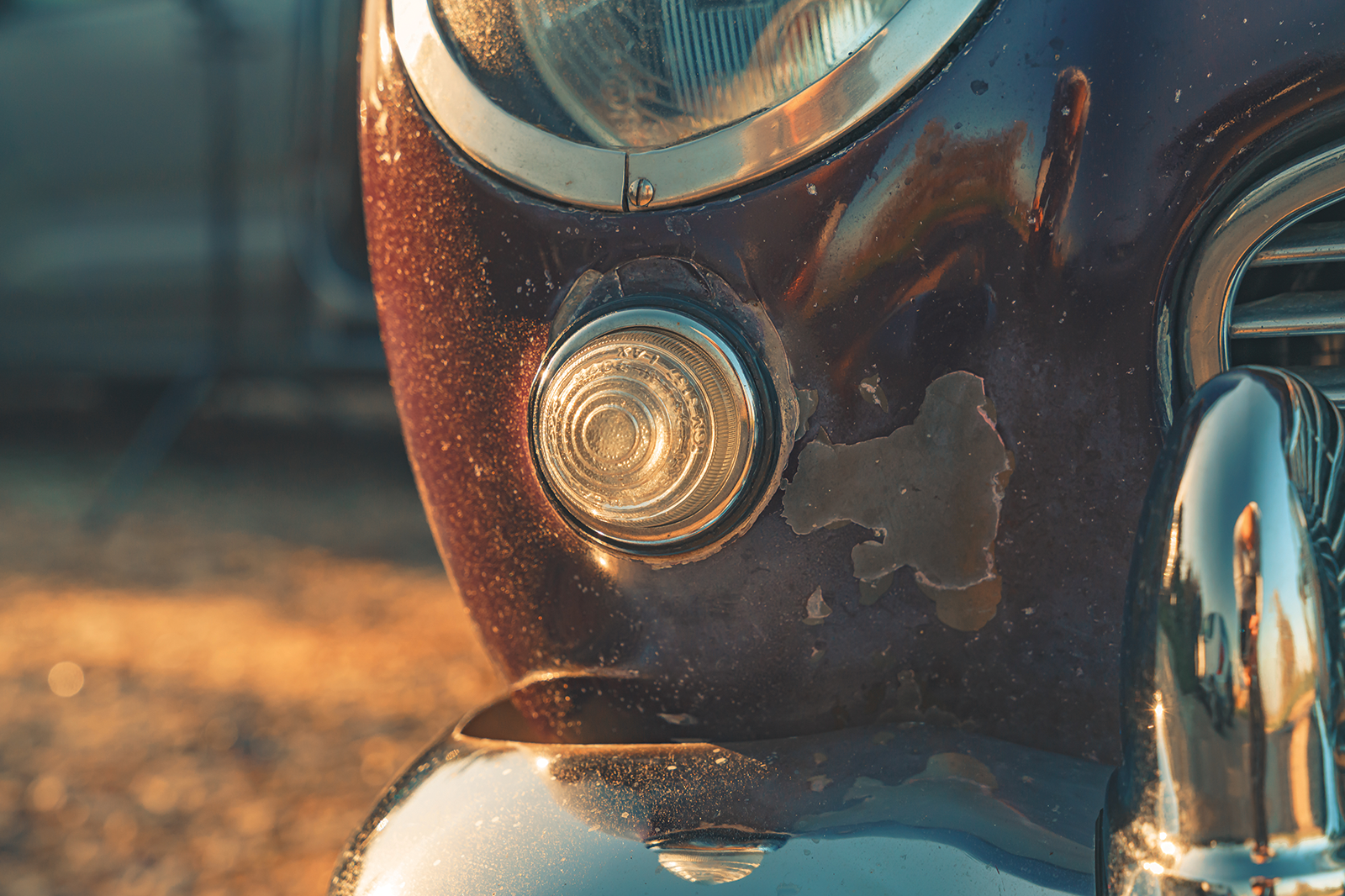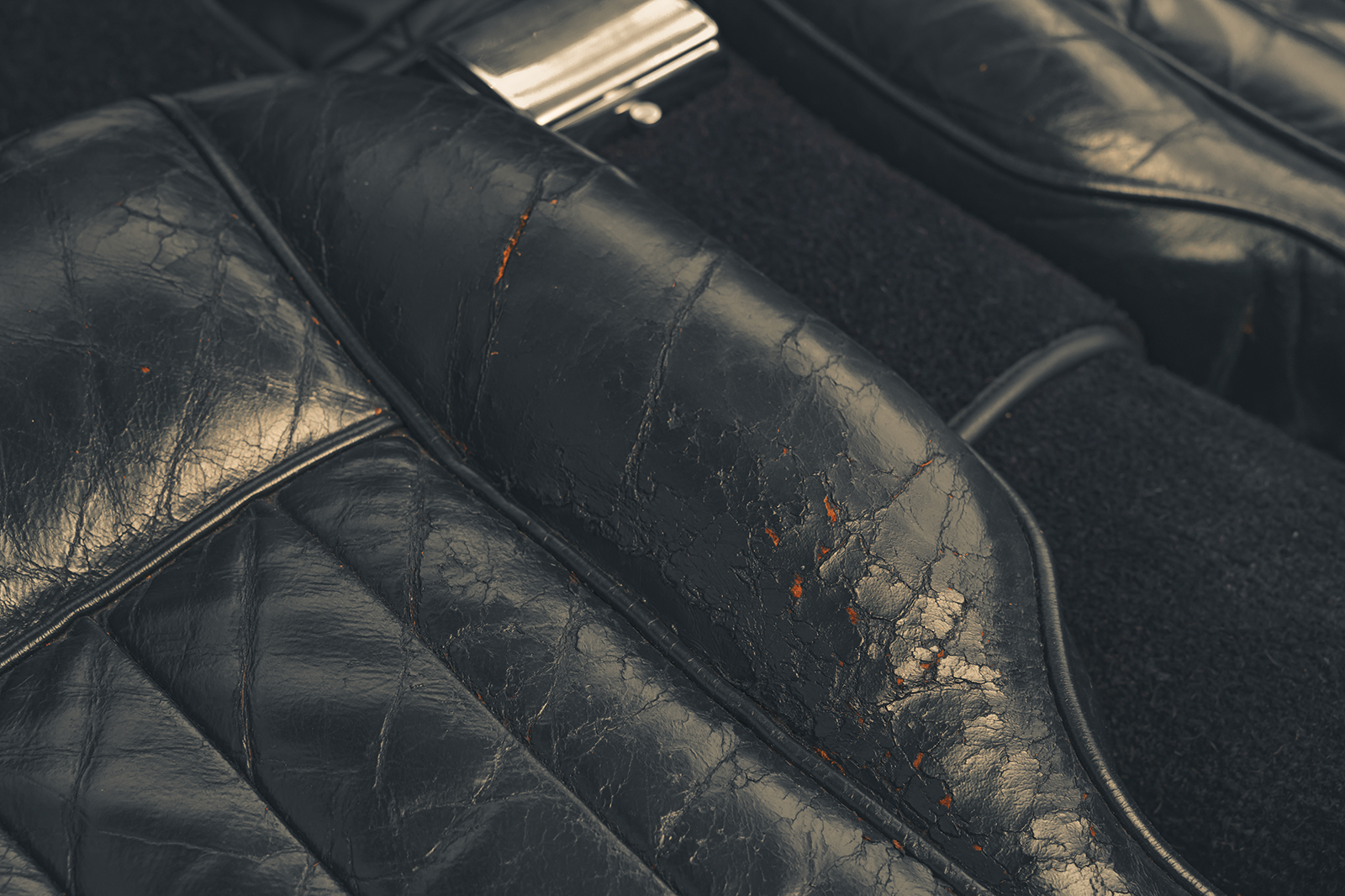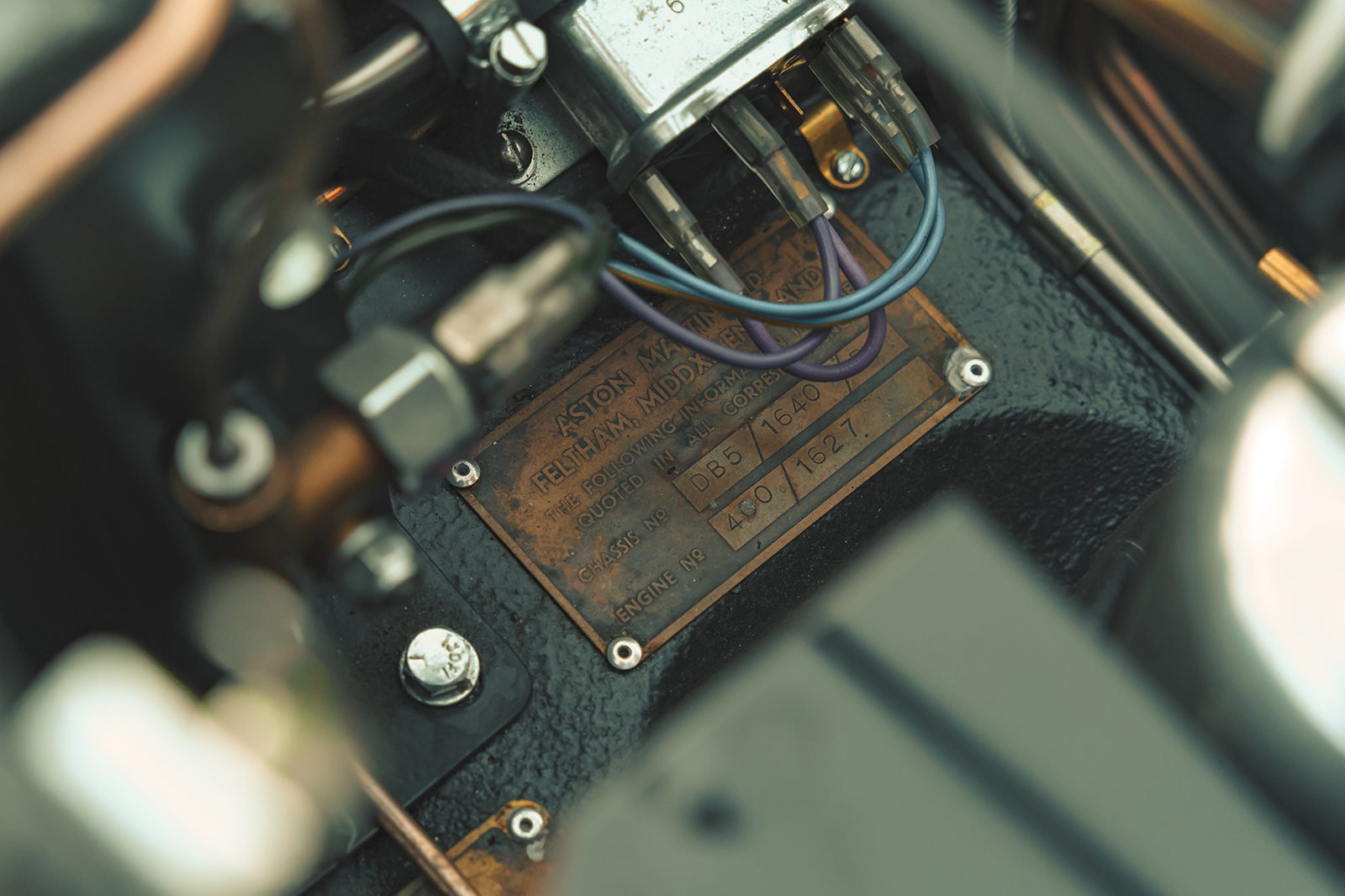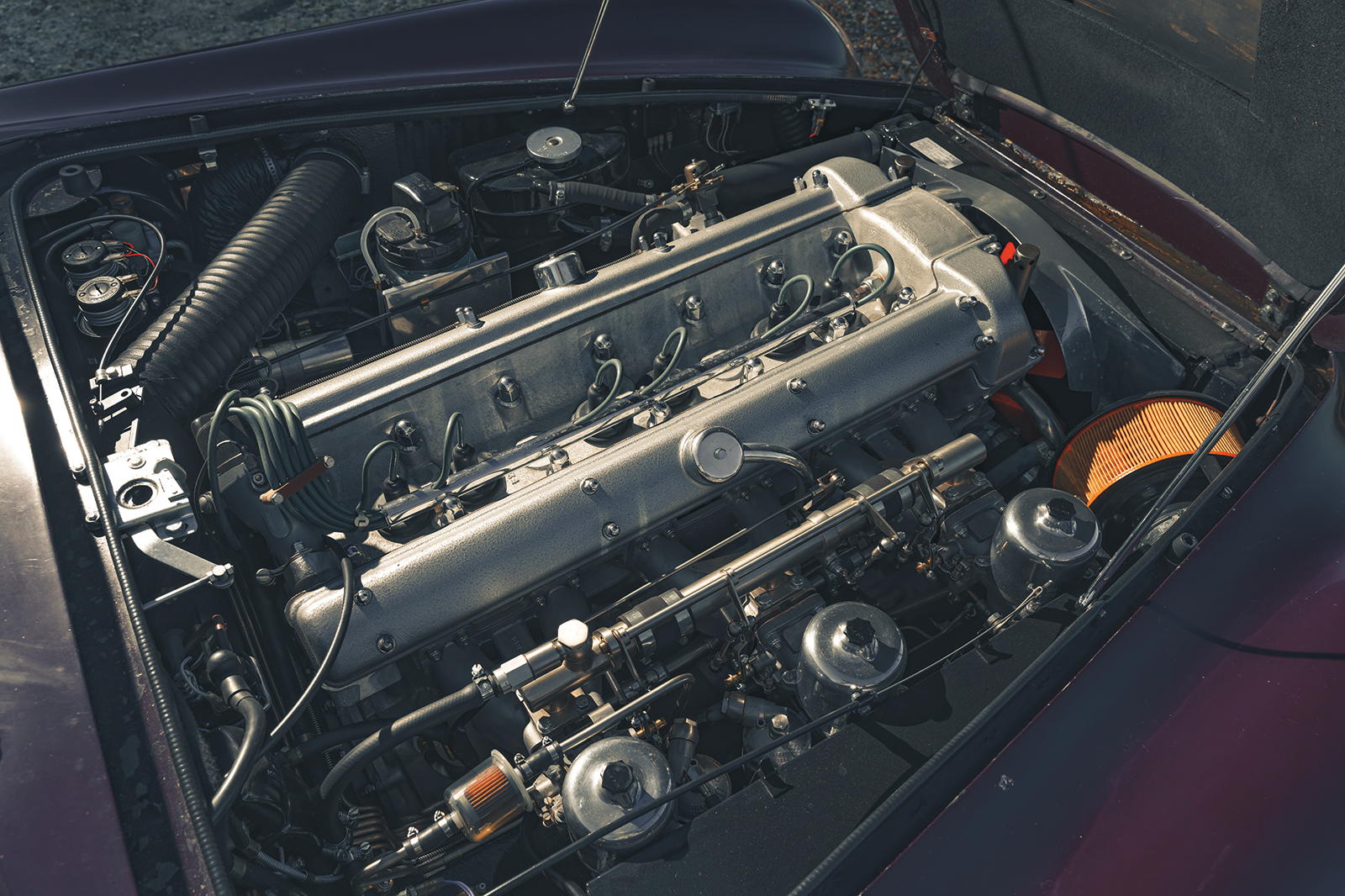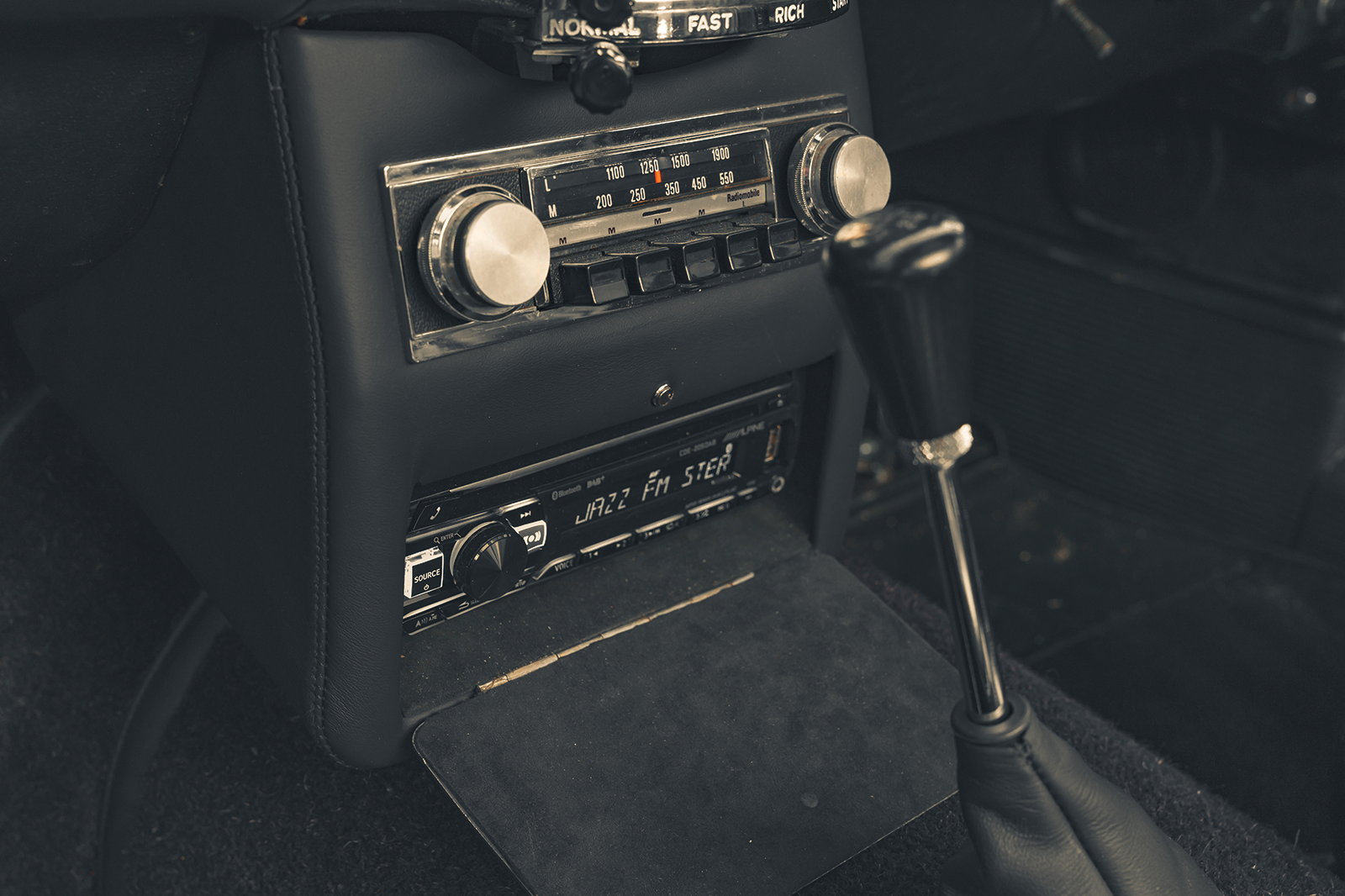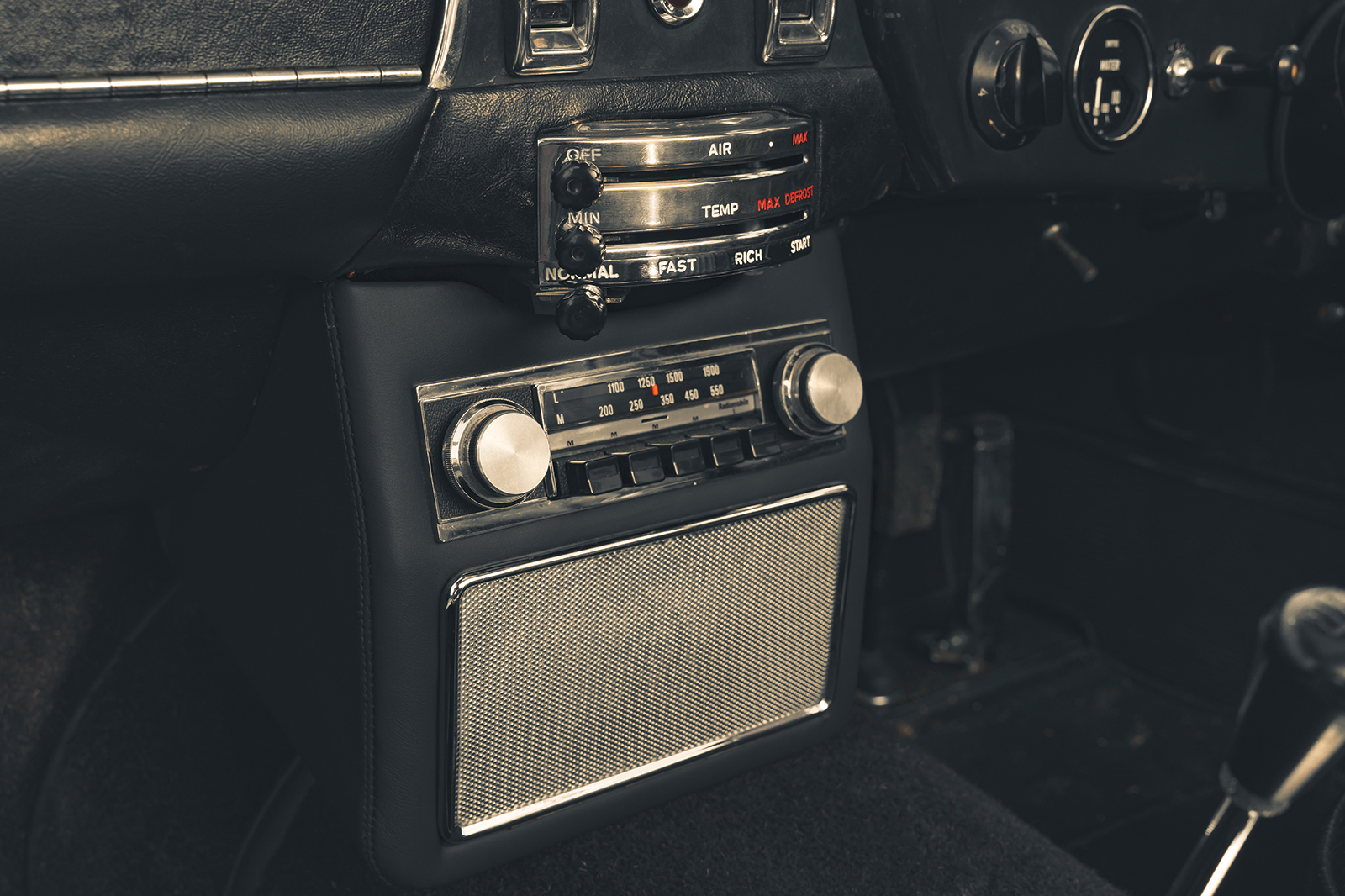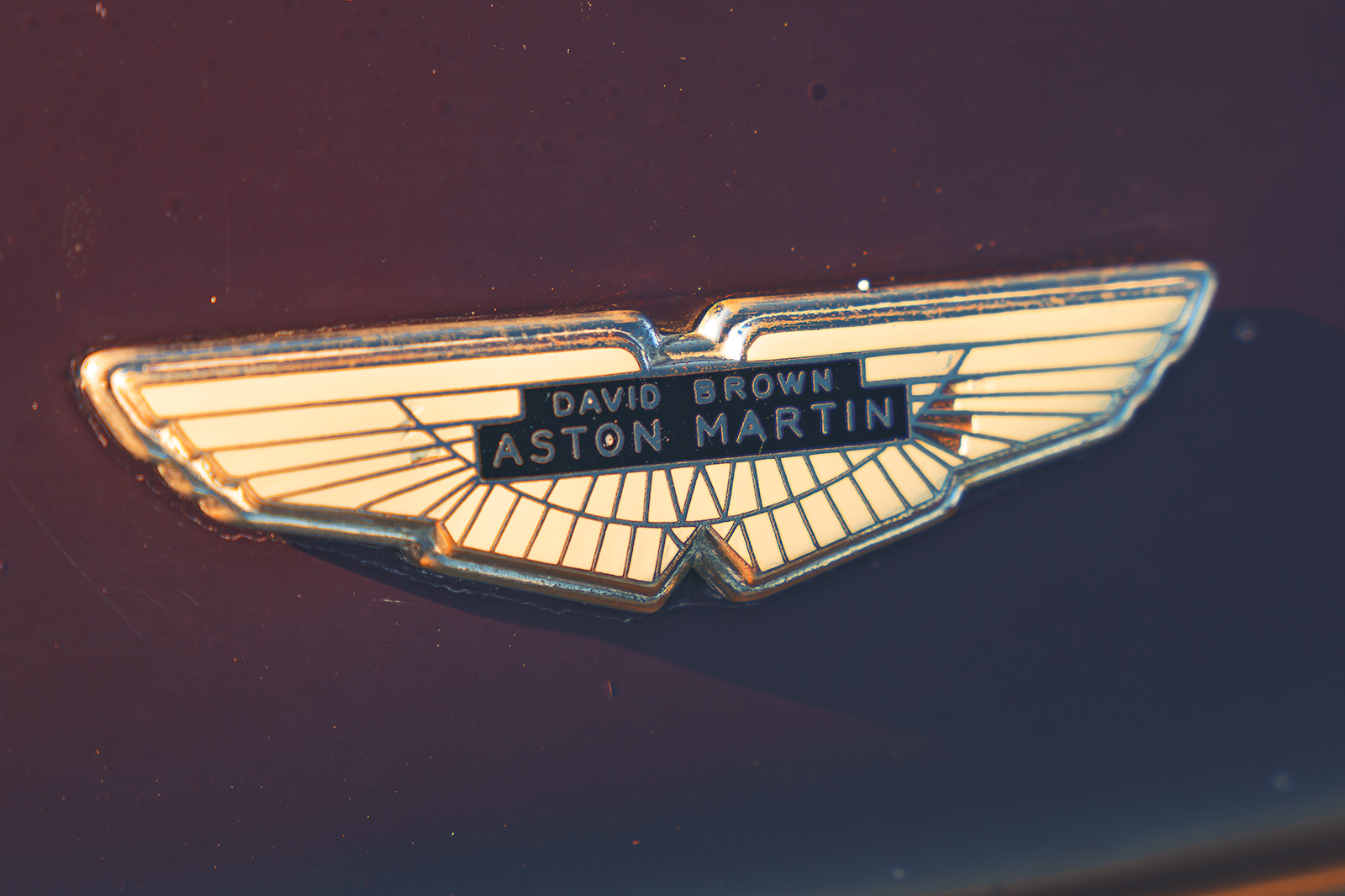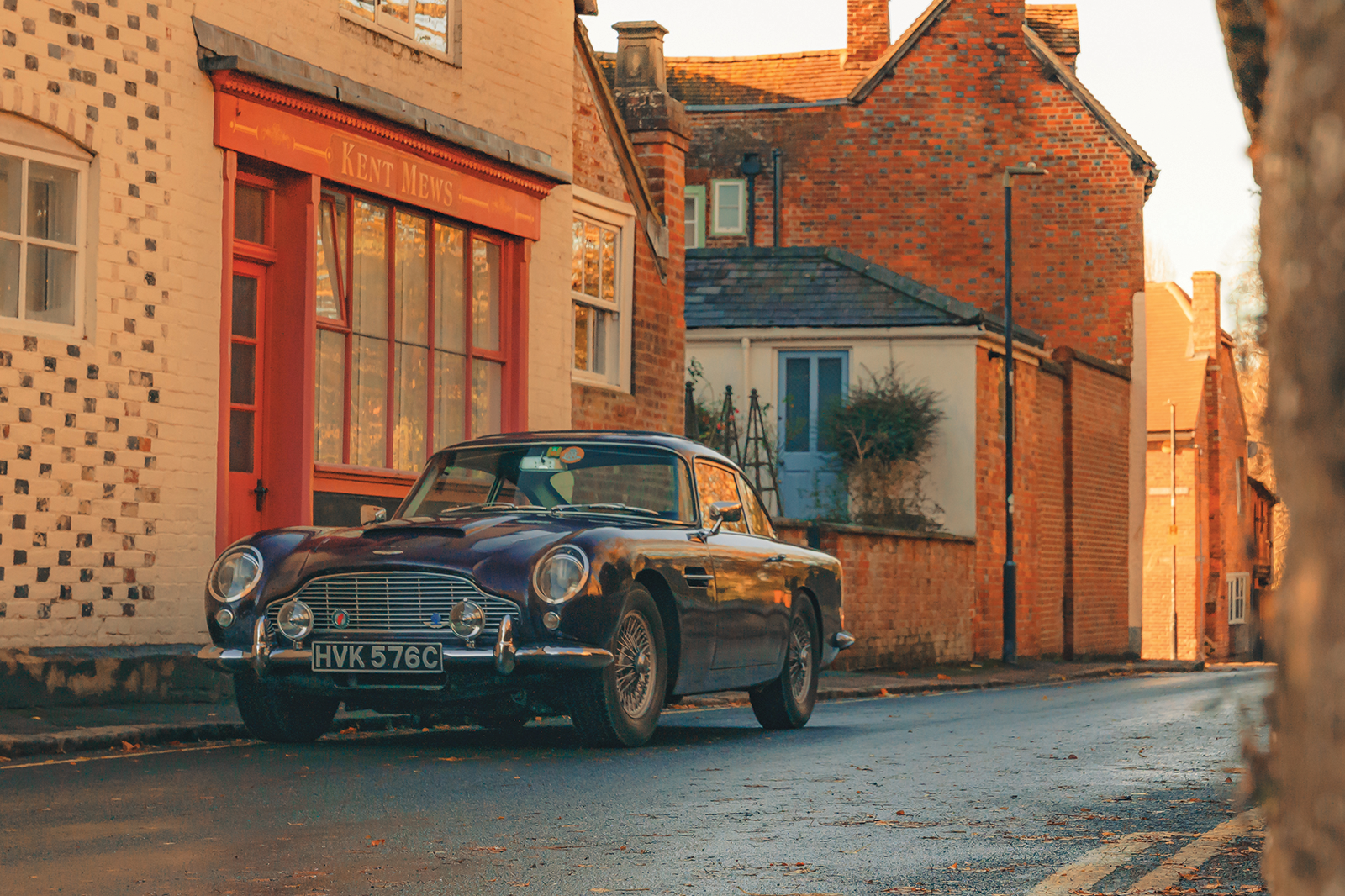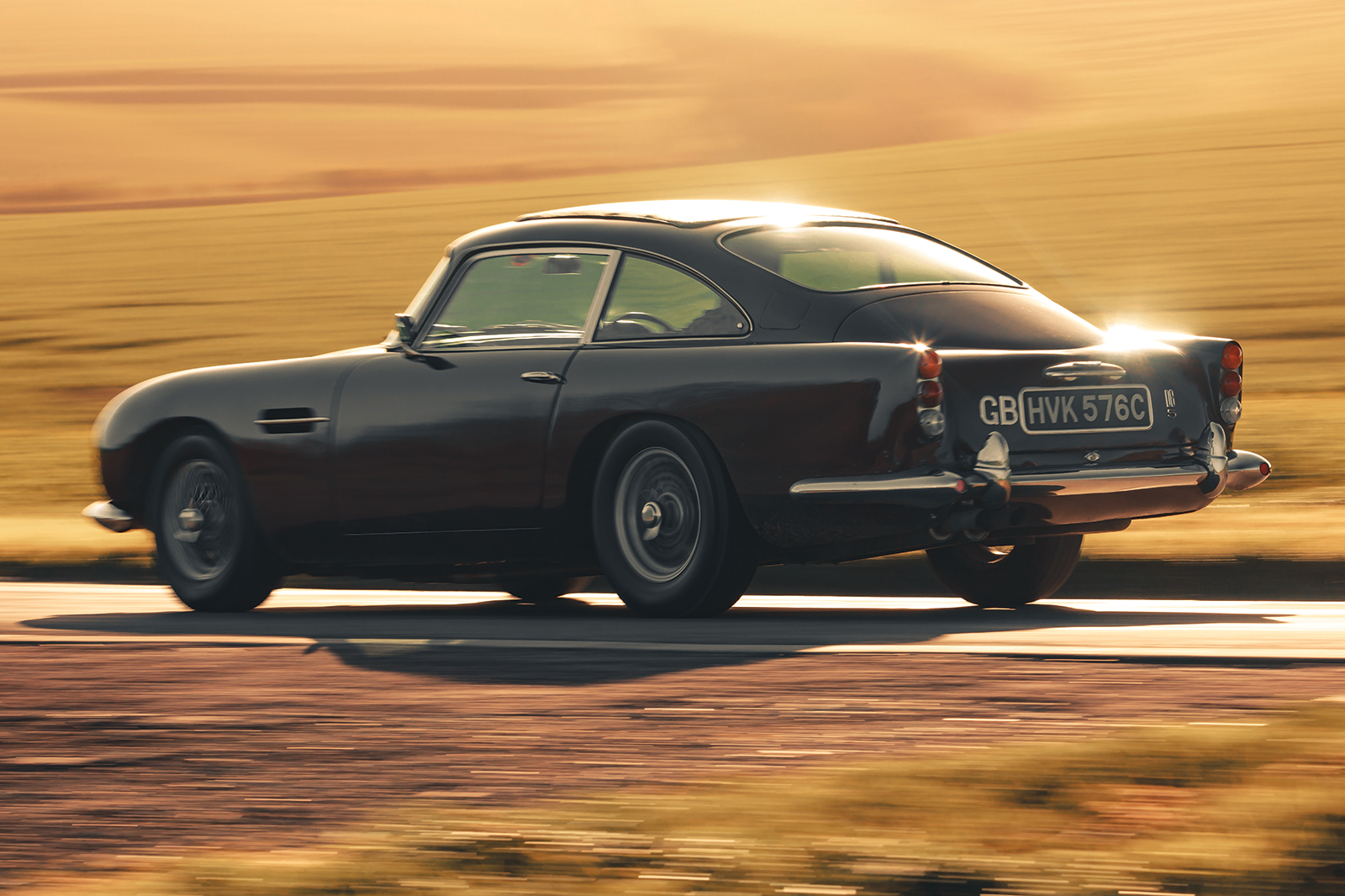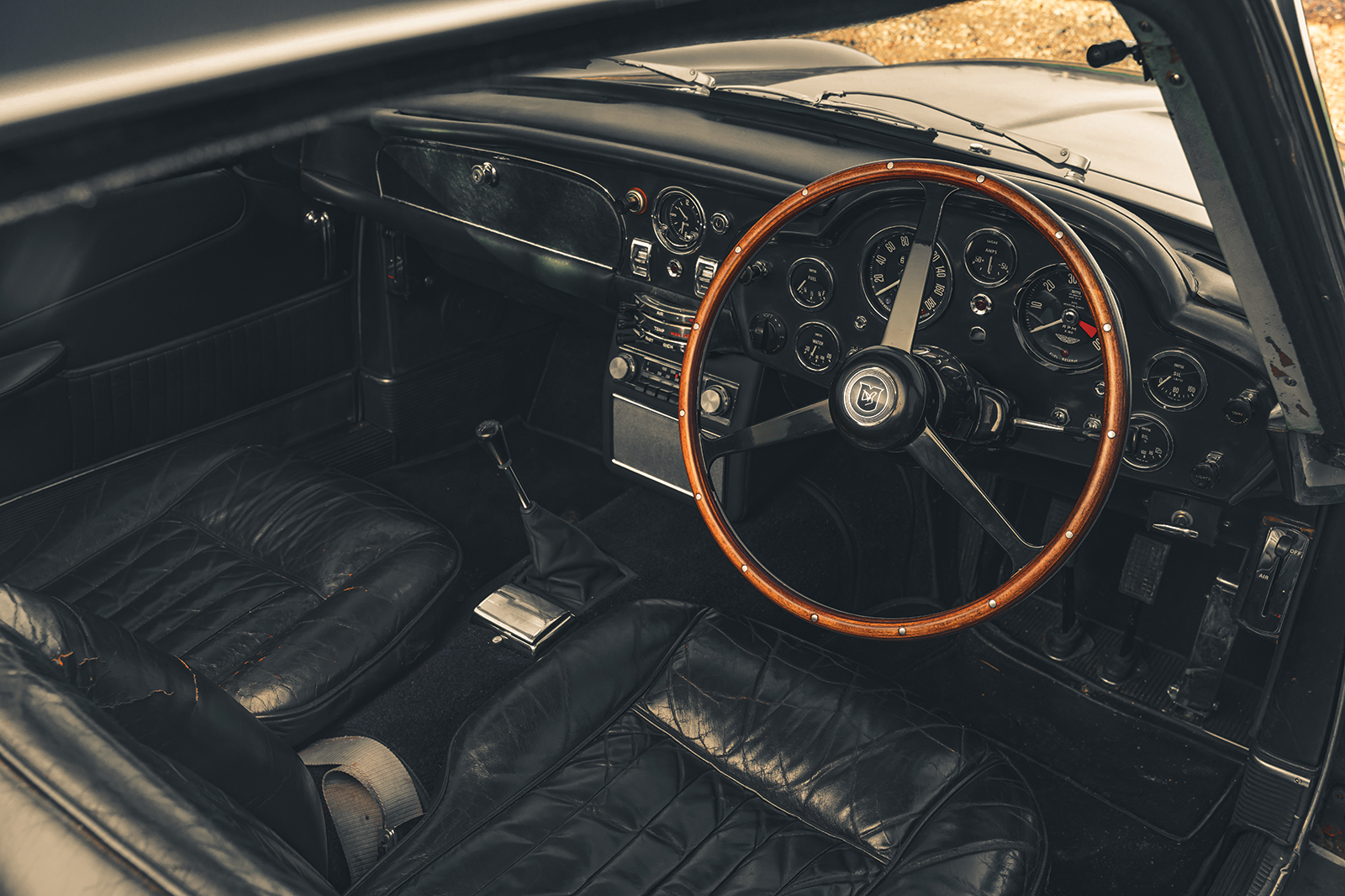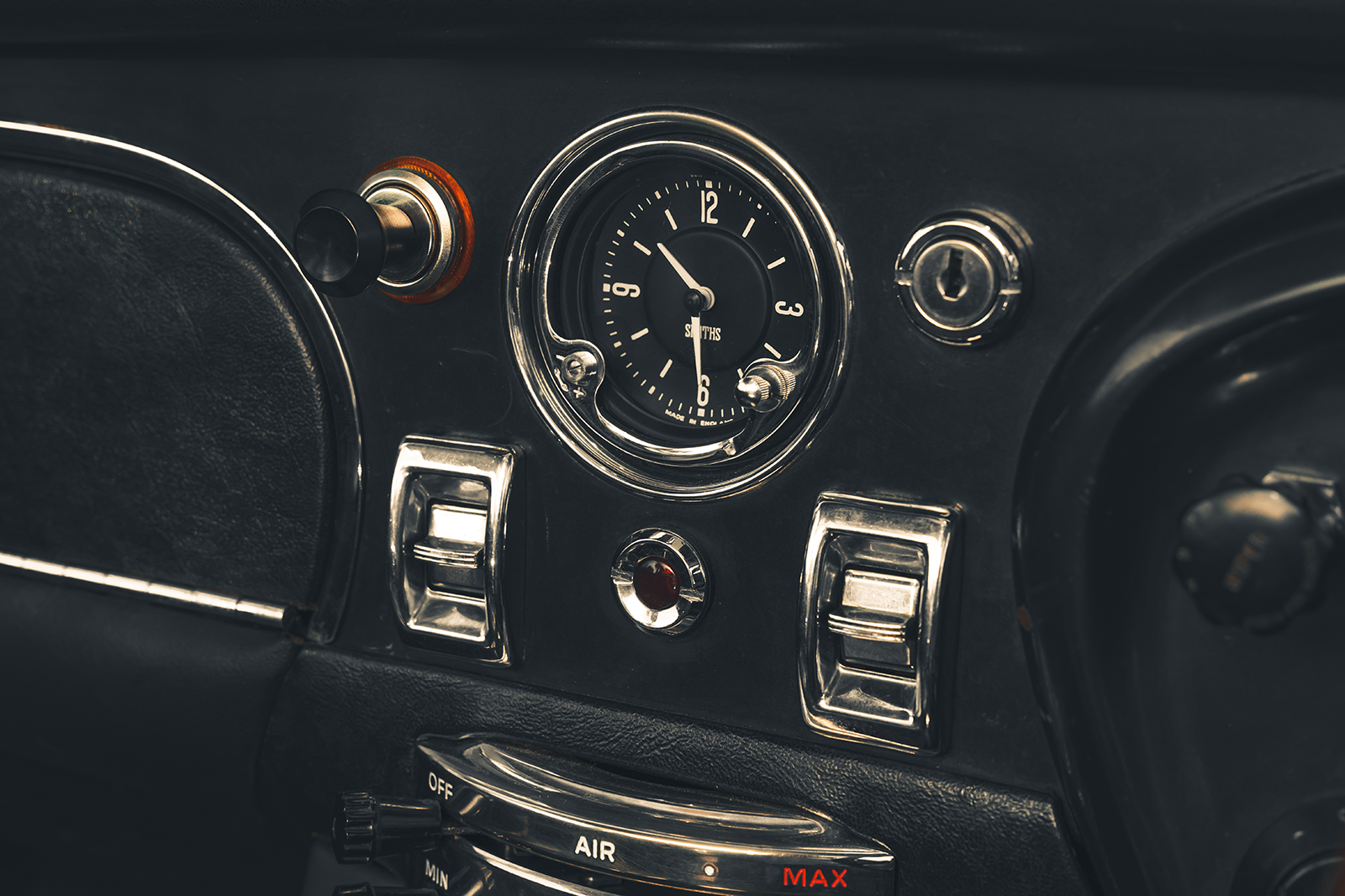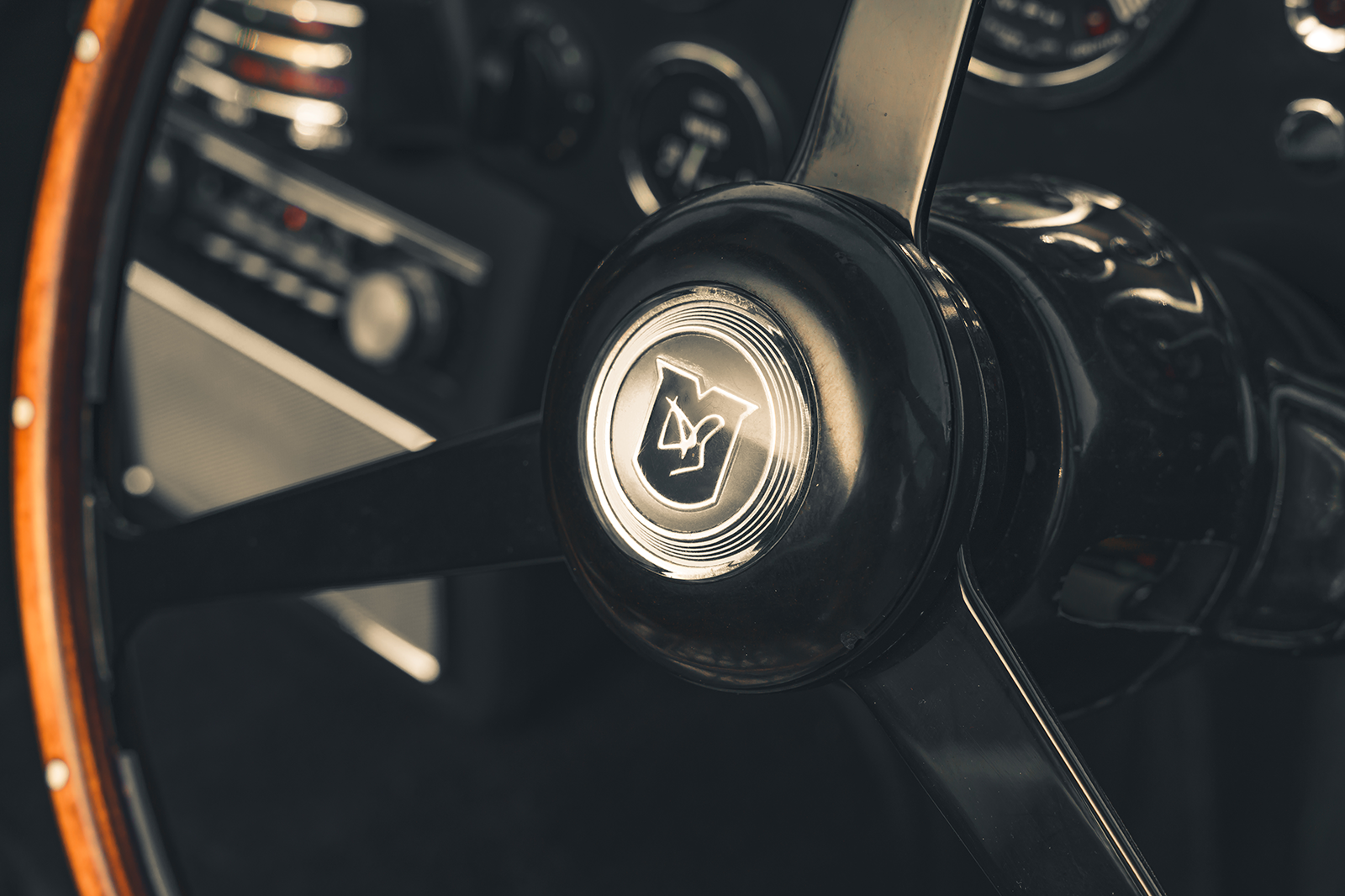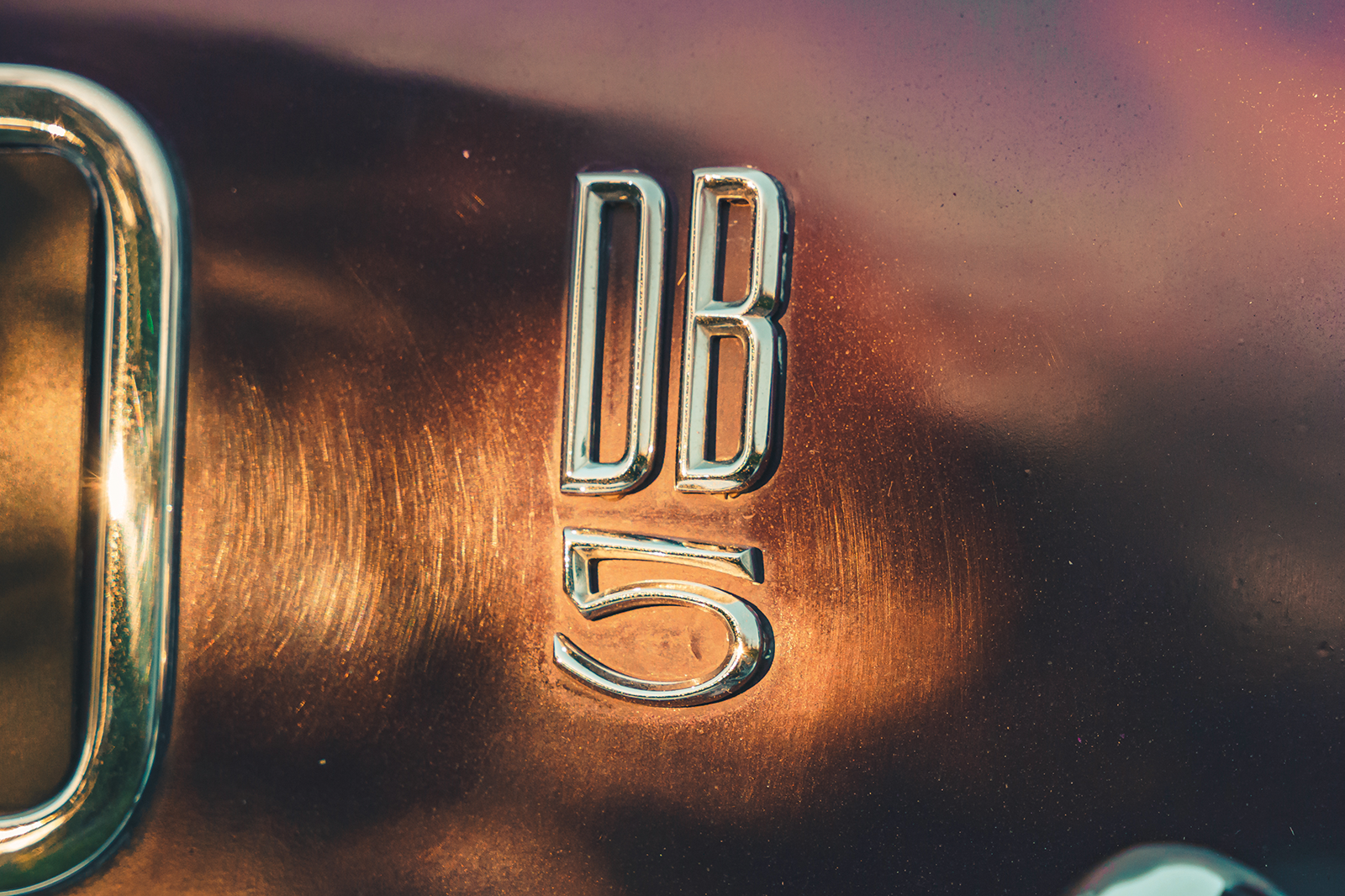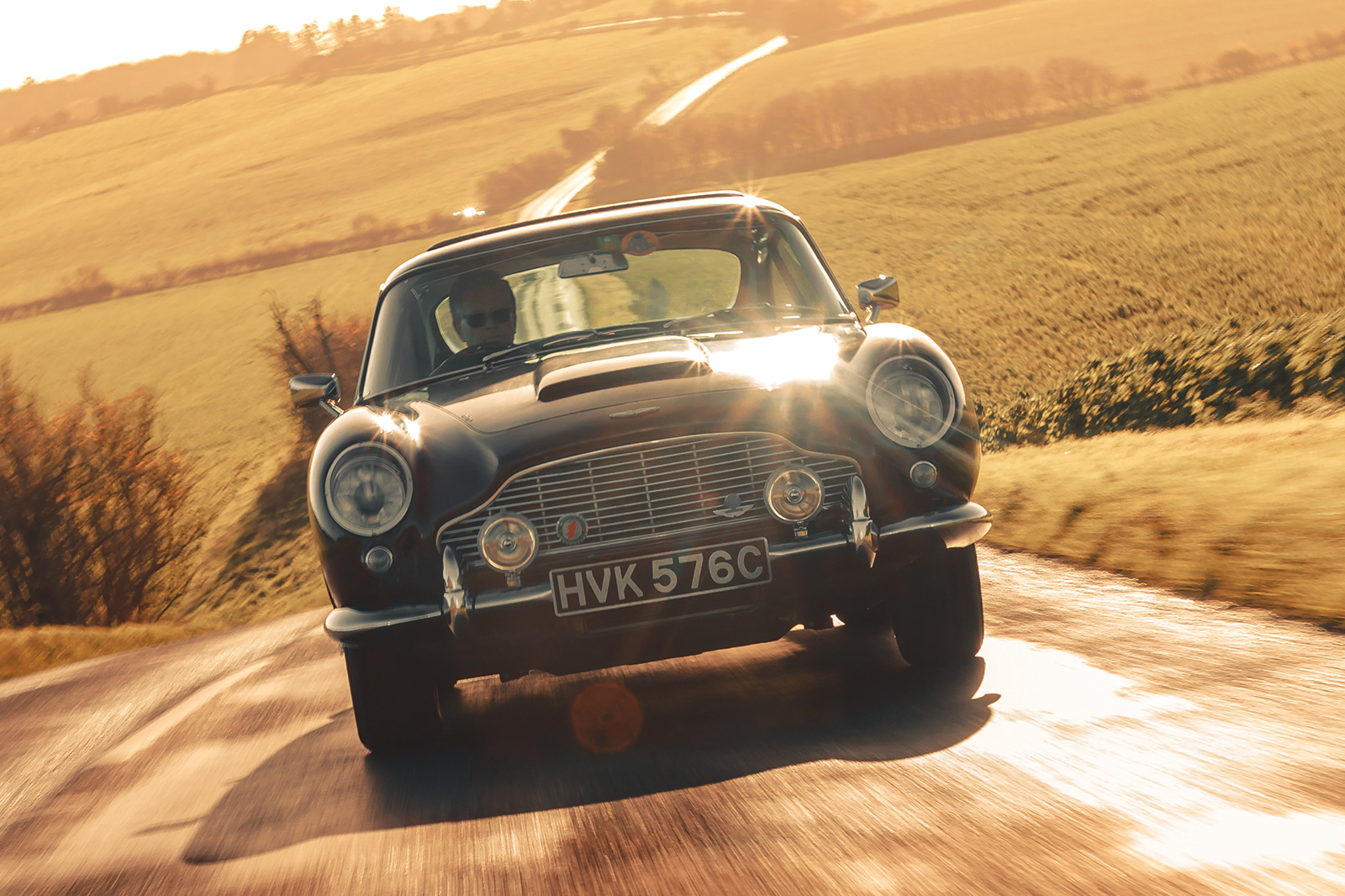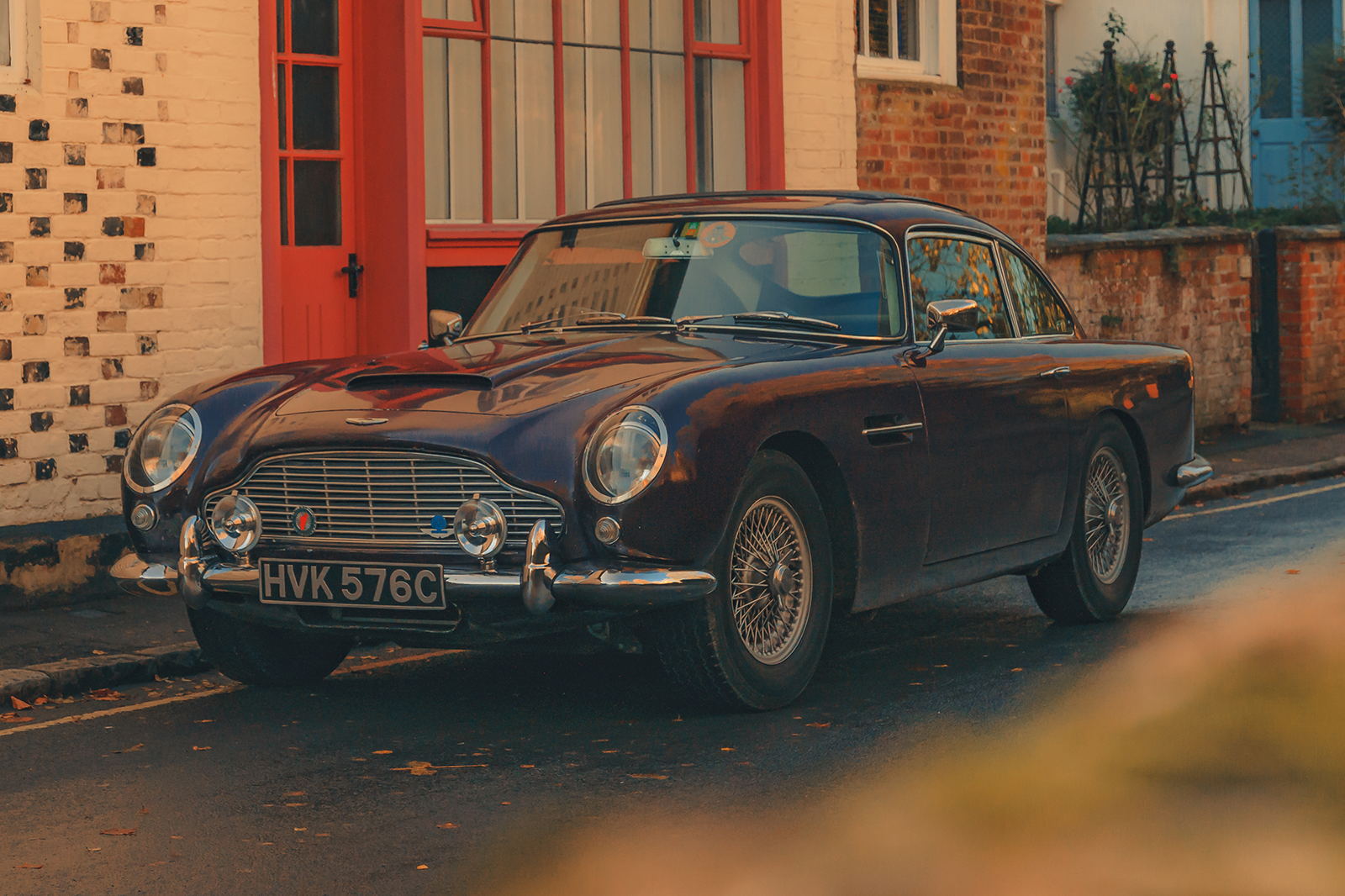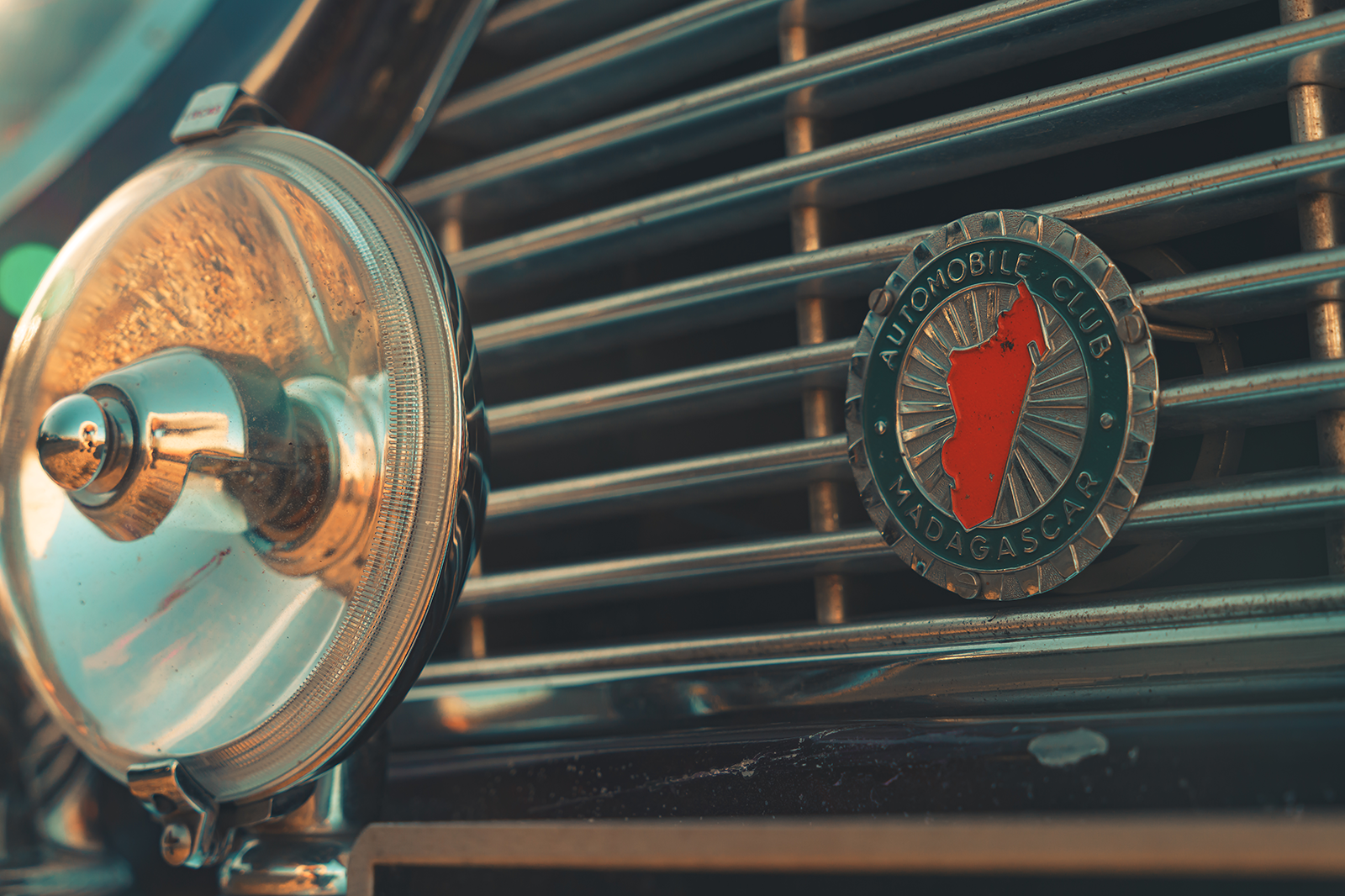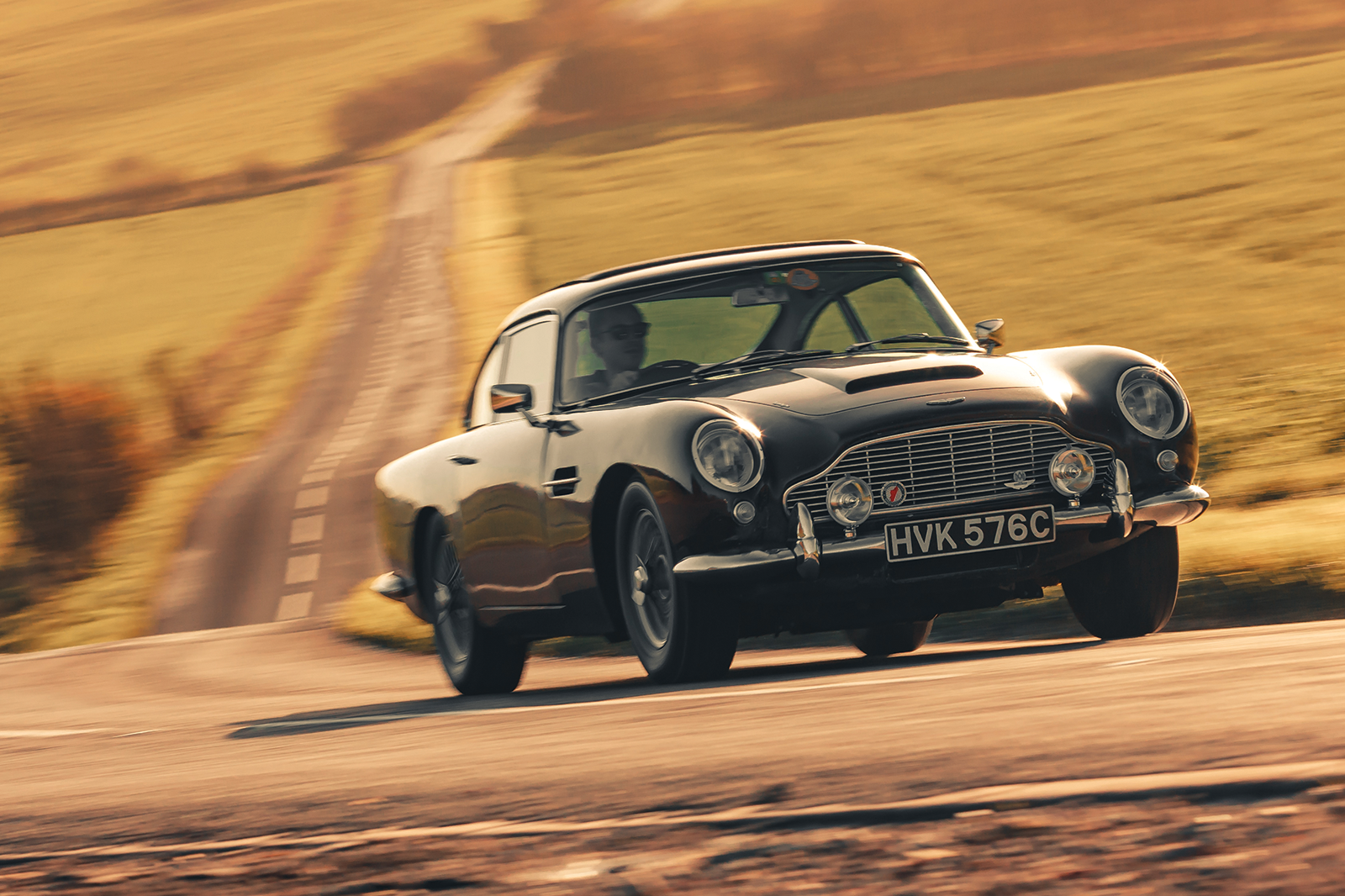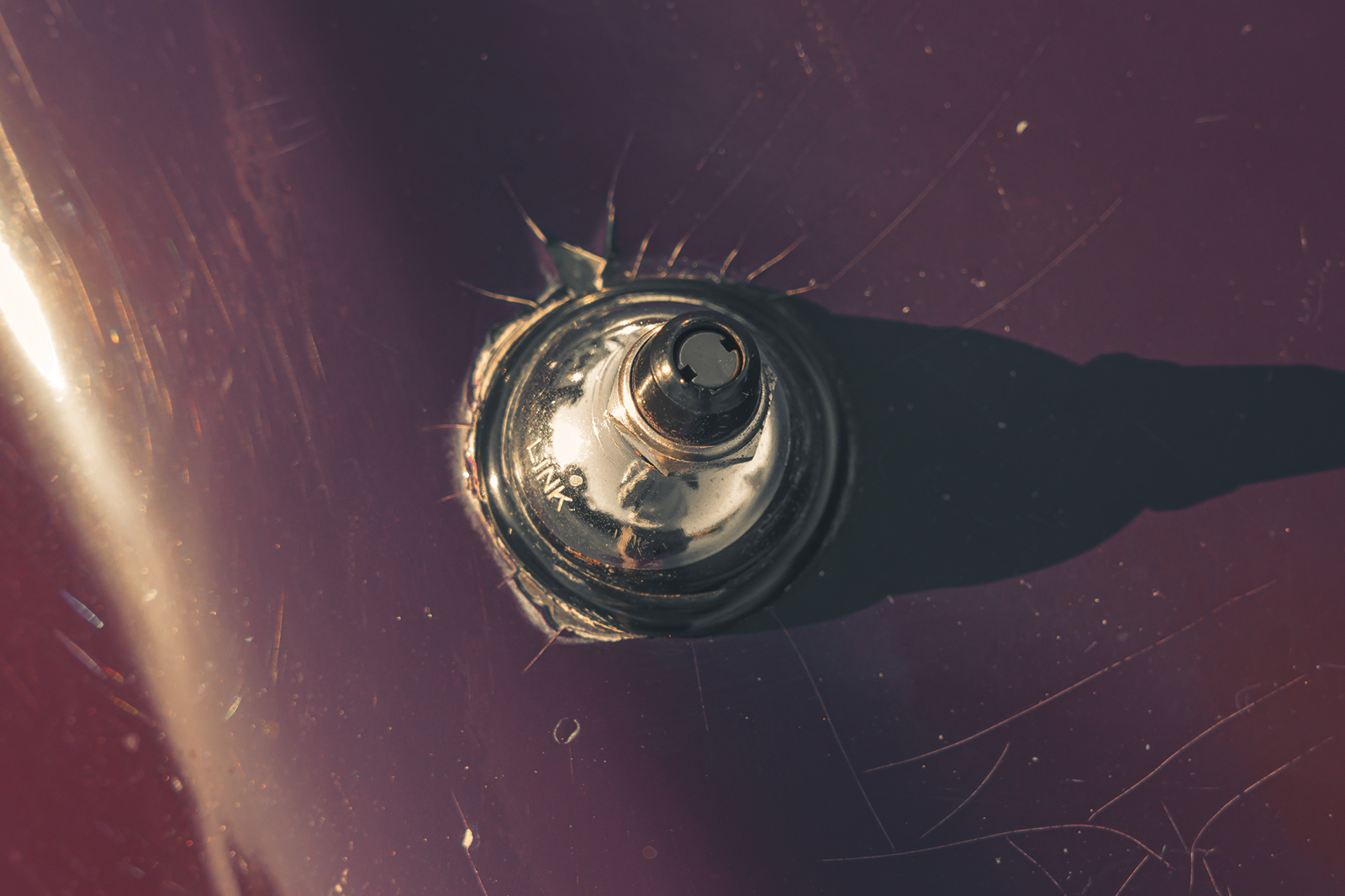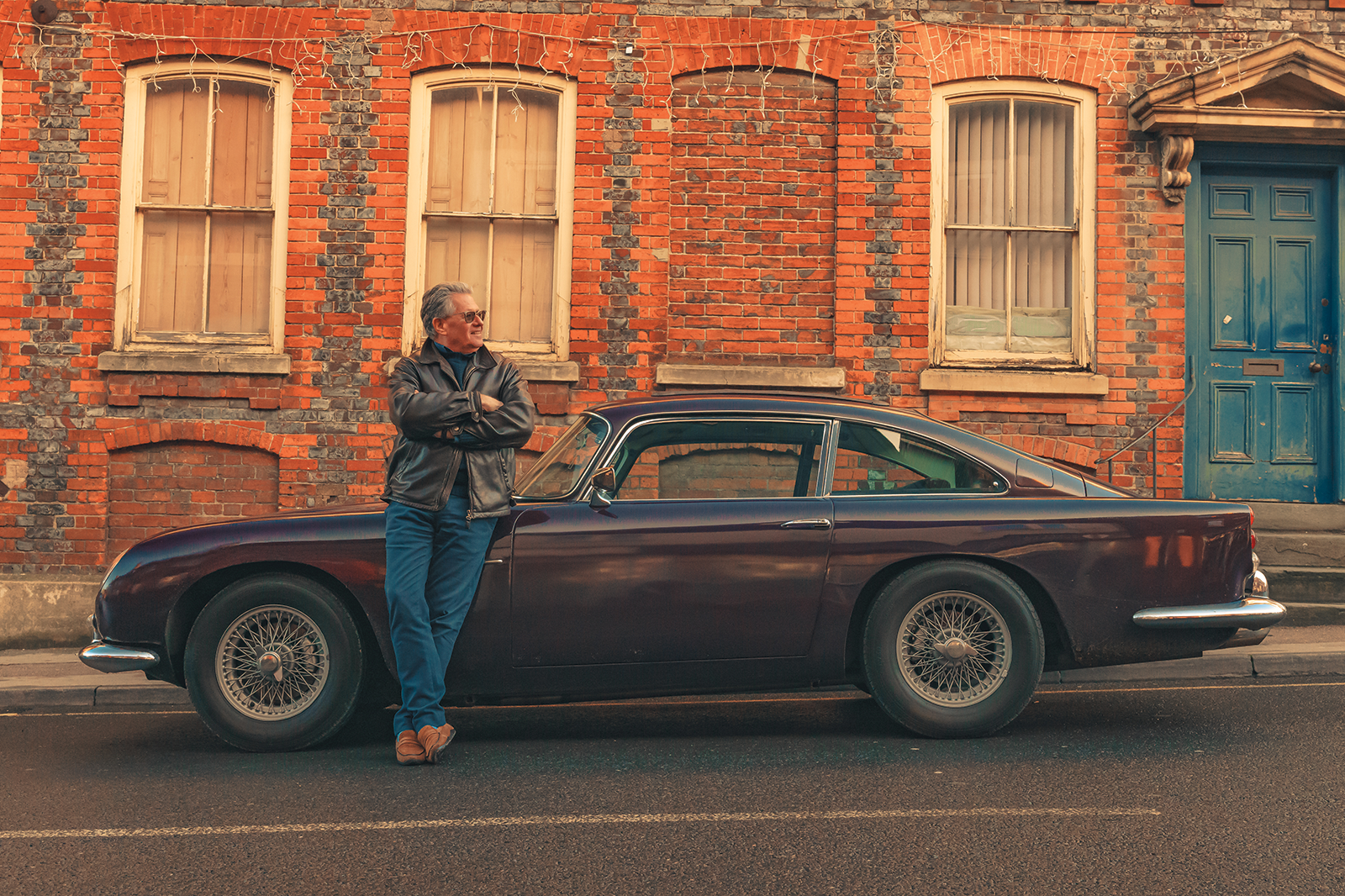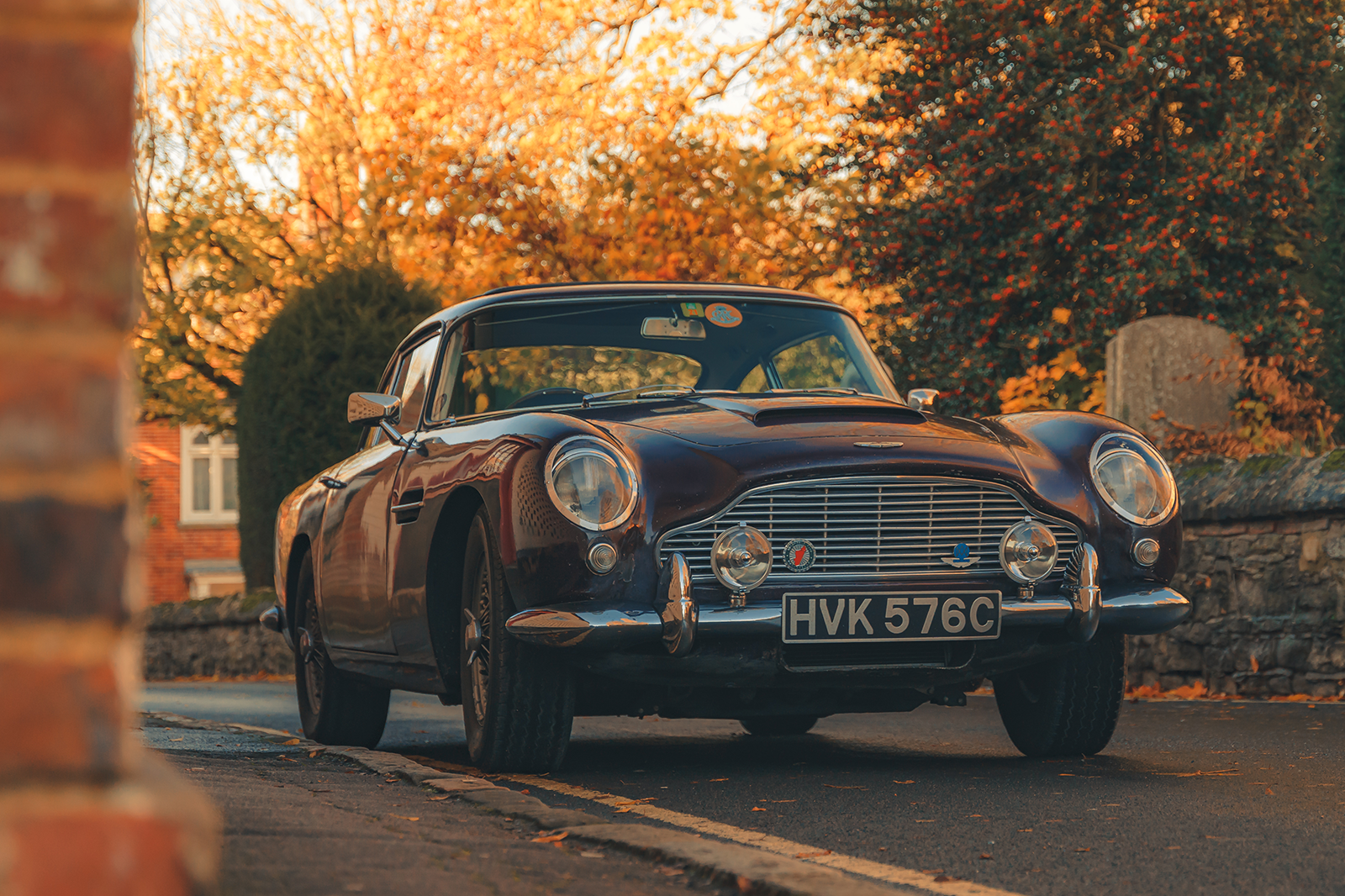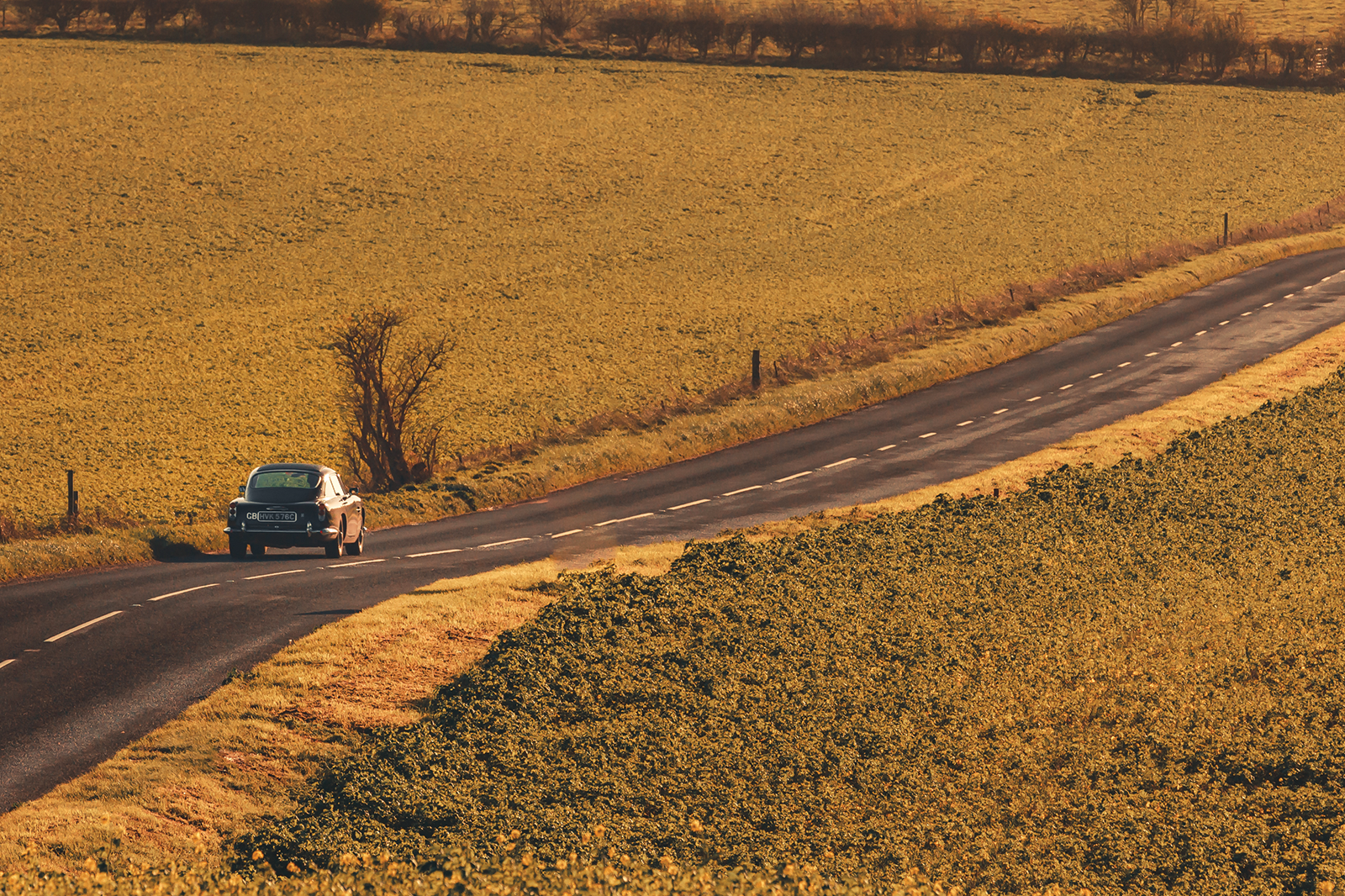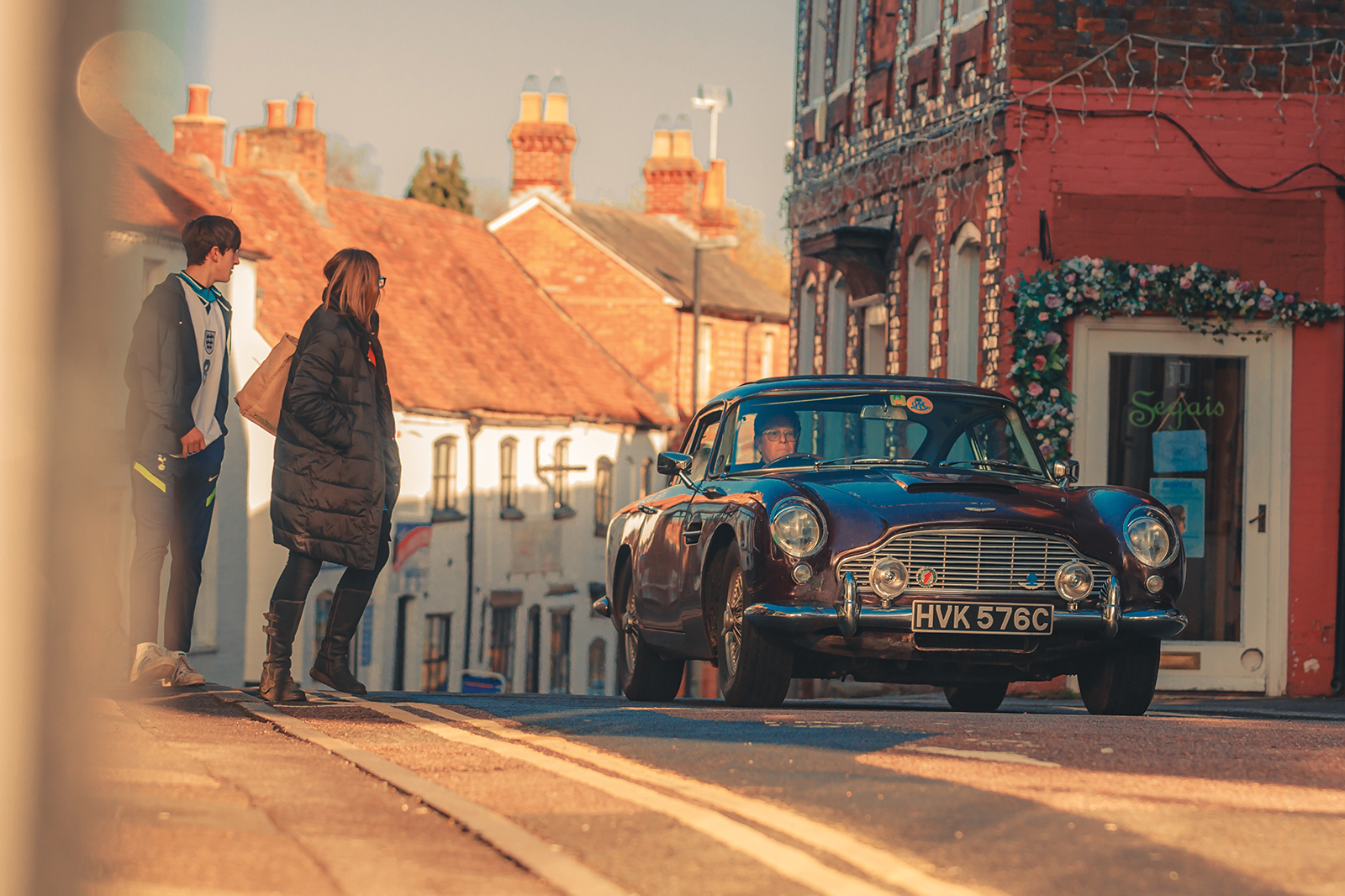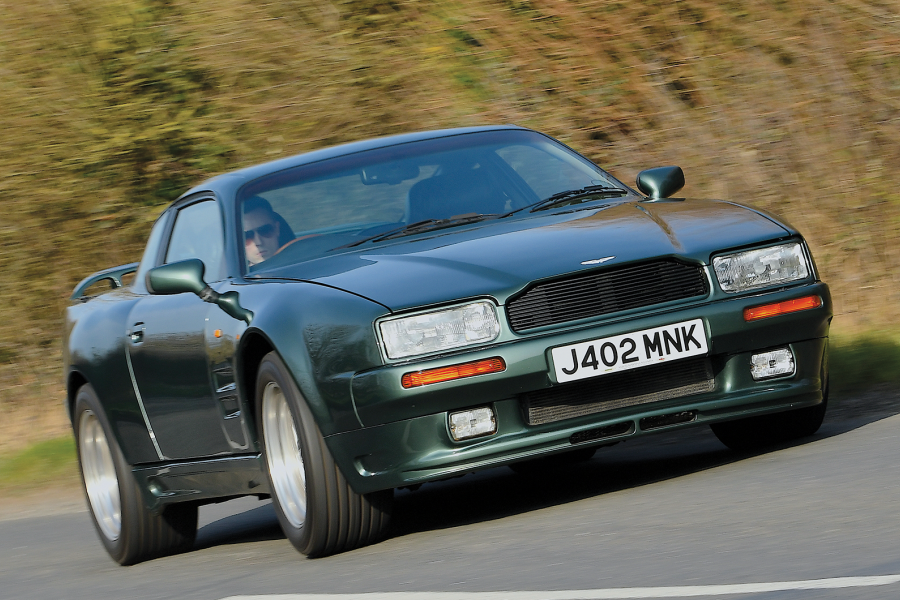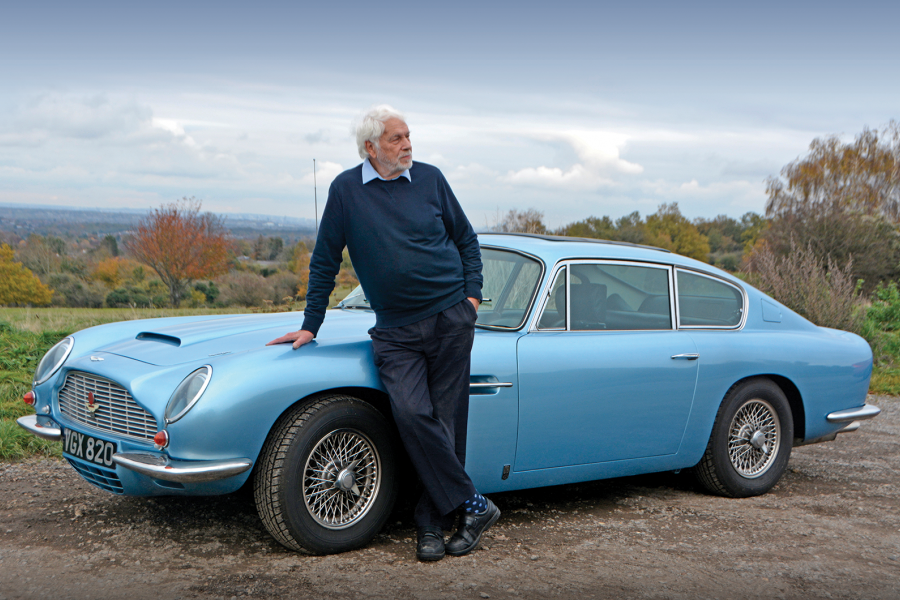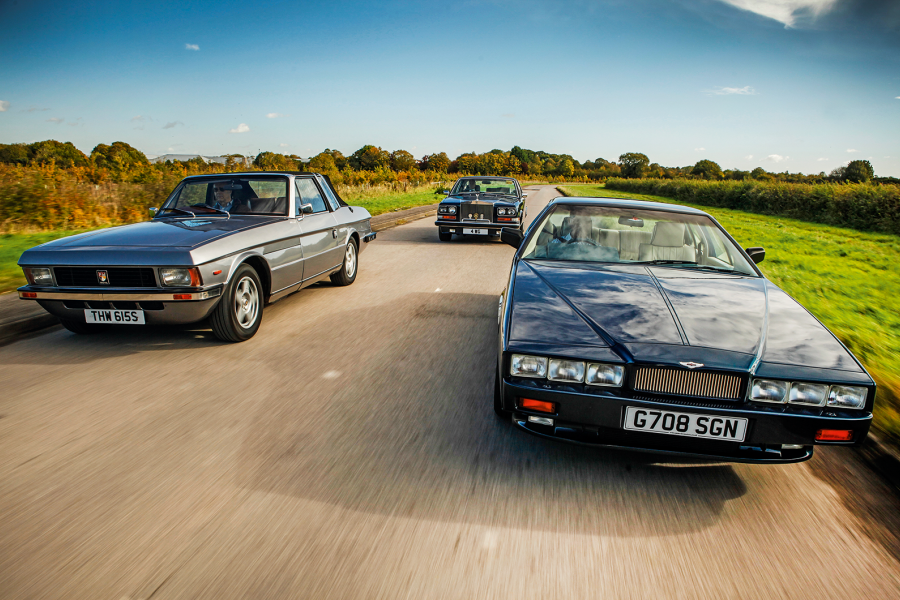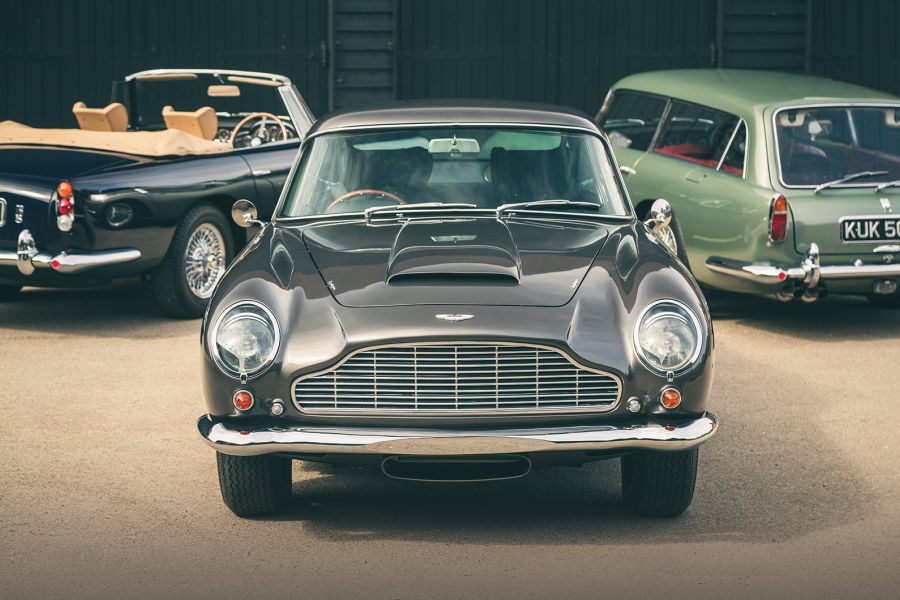Certainly, as we drive into Wantage, we don’t struggle to be let out of junctions or for admiration when parking.
The DB5 connects with the public in a way few other cars do.
The famous Touring-crafted Superleggera aluminium bodywork needs no introduction, although the Roman Purple of Rodney’s car does seem to throw the occasional passer-by off the scent of it being an Aston, in a way you suspect a Silver Birch car wouldn’t.
The DB5 trades some agility for comfort
It’s rare to see DB5s in a dark hue, although the neat contrast this provides with the lashings of chrome makes that rather a shame.
As the light fades on our day with the Aston, the purple almost becomes black – and suddenly the car doesn’t just look cool, it looks pretty mean, too.
Inside, the DB5 is entirely black no matter what the time of day, and once again it looks gloriously original.
Where possible, the patina has been preserved, including around the radio aerial
The seats are just starting to show a few cracks, perfectly complementing the exterior wear on the body, but this isn’t
an abused interior.
The black-painted metal dashboard is unscuffed and glossy, while the knobs, dials and instruments in front of you are all clear and correct.
Ergonomically, the DB5 is a well-sorted car, with the pedals well placed relative to the driver and the seating position halfway between a legs-outstretched sports car and an upright saloon.
Owner Rodney McMahon has a valuable classic car that he is not afraid to street park and enjoy
Of course, it had to be a comfortable place to sit to be a truly accomplished GT.
There are impressive technical details in the interior, too, such as electric windows that are far quicker and quieter than most 1960s set-ups – Aston’s own design, no less.
So too the ventilation controls, which are operated independently by driver and passenger, each having a lever mounted next to the door opening.
Stonechips and parking dings become part of this DB5’s character
But, again, there’s more than first meets the eye in Rodney’s car.
The original radio is just for ornamentation, while the actual head unit, a more modern item, is hidden in a pleasingly ‘Q Branch’ concealed compartment behind the central speaker grille, with two speakers now mounted in the footwells instead.
Thanks to the James Bond effect, the values of DB5s have become completely disconnected from what they are capable of on the road – and only billionaires can ever truly ignore that.
‘This car isn’t just about occasional B-road blasts. It’s also intended for cross-continental journeys and commuting alike’
But Rodney’s Aston is as close as we can get to stepping back in time.
Not to 1965, but more like 1980, when old DB5s were being ragged around, commuted in and taken on holiday by enthusiasts.
There can’t be many of them still doing that, but we’re glad there’s at least one – and that it’s still a thrilling experience.
Images: Max Edleston
Thanks to: RS Williams
Factfile
Aston Martin DB5
- Sold/number built 1963-’66/1063
- Construction steel platform chassis; tubular steel frame clad with aluminium panels
- Engine all-alloy, dohc 3995cc straight-six, triple SU carburettors
- Max power 282bhp @ 5500rpm
- Max torque 288lb ft @ 3850rpm
- Transmission all-synchromesh ZF five-speed manual, RWD
- Suspension: front independent, by unequal-length wishbones, telescopic dampers, anti-roll bar rear live axle, trailing arms, Watt linkage, lever-arm dampers; coil springs f/r
- Steering rack and pinion
- Brakes discs, with servo
- Length 15ft (4752mm)
- Width 5ft 6in (1676mm)
- Height 4ft 4in (1320mm)
- Wheelbase 8ft 2in (2489mm)
- Weight 3233lb (1466kg)
- 0-60mph 6.2 secs
- Top speed 149mph
- Mpg 15-20
- Price new £4248 (1964)
- Price now £500,000-1m*
*Price correct at date of original publication
Enjoy more of the world’s best classic car content every month when you subscribe to C&SC – get our latest deals here
READ MORE
Aston Martin DB5 vs Mercedes-Benz 300SL vs Ferrari 275GTB: million dollar babies
Ferrari 250GTE: Enzo’s roadgoing winner
Driving Tadek Marek’s unique Aston Martin DB4
Charlie Calderwood
Charlie Calderwood is Classic & Sports Car’s Features Editor
